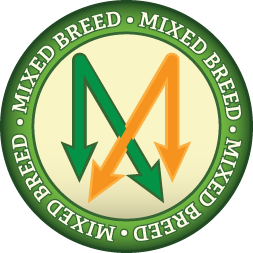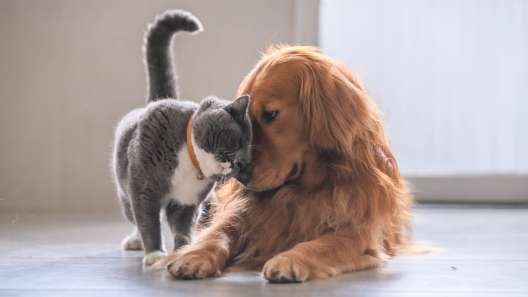
-
Activity Level:
low
-
Shedding Level:
high
-
Grooming Level:
moderate
-
Trainability:
high
-
Good for Novice Owners:
high
-
Adaptability:
moderate
-
Kid/Pet Friendly:
often
-
Prey Drive:
low
-
Watchdog:
aware
- Average Size: Small
- Average Lifespan: 13-15 years
Pug Mix Dog Breed Information
Overview
Temperament
Adaptability
Health
Owner Experience
Grooming
Activity Level
Size
Life Span
A Pug Mix is a cross between a Pug and another dog breed. A mixed-breed can inherit any combination of traits from their parents. It’s important to ask the breeder about the other parent breed in the mix so you know what potential characteristics to expect in a Pug Mix. Should a Pug Mix take after their Pug parent, they will be an affectionate, social dog that loves their families.
A Pug tends to be playful, social, friendly, and gentle. They thrive on attention and affection and tend to get along well with children, other pets, and other dogs.
As long as they are well-socialized, they also tend to be open and friendly with strangers. They can be prone to barking and it can become a nuisance behavior if you do not train your dog to stop barking early on.
If the other parent breed has a similar temperament, then you can expect the same from a Pug Mix. You still want to ask the breeder about the other parent breed as they will likely introduce their own potential quirks.
You can also meet the mother in person to get a sense of her temperament and see the behavior she is modeling for her puppies. Although the breeder should have started socialization and training, it is up to you to continue to train and socialize a puppy once you get them home.
Pugs are moderately adaptable dogs. Although they do well in apartments as well as larger homes, they are particularly sensitive to heat and cold as a snub-nosed dog breed. They also do not like to be left alone for long periods of time.
If the other parent breed is similar, then you should be able to expect the same from a Pug Mix. The other parent breed could still introduce some traits that affect adaptability, so you do want to ask the breeder about them.
Mixed-breed dogs can sometimes be healthier than purebred dogs, but it is not a guarantee. They can inherit none, some, or all of the conditions common to their parent breeds.
From the Pug side, potential health conditions to be aware of include eye problems, luxating patella, encephalitis, and hip dysplasia. As a brachycephalic, or snub-nosed, dog, they are prone to allergies and respiratory issues.
Reputable breeders will screen their dogs to avoid passing preventable issues on to puppies. So, make sure you ask about the health and genetic history of both of the parents. You can also ask about any health tests or clearances that have been done.
A Pug is eager to please and tends to pick up on things quickly. They tend to be a good fit for owners of all experience levels. The other parent breed could make a Pug Mix easy to train or more difficult, so you want to make sure you ask the breeder about them.
A Pug Mix can inherit a coat similar to one of their parents or a coat that is truly a mix of both. Should they inherit the Pug coat, it will shed a bit year-round, require weekly brushing, and the occasional bath. The other parent breed may affect grooming needs, so it’s important to know what those could potentially be.
In addition to coat care, and regardless of coat type, you will also need to care for your Pug Mix’s nails, ears, and teeth. Cutting nails once or twice monthly keeps them from growing too long. Ear checks on a weekly basis with careful cleanings as needed can help prevent ear infections.
Brushing teeth or using an enzyme toothpaste every day in addition to cleanings at the vet as needed are ideal dental care for dogs. You also want to check your Pug Mix’s face wrinkles to make sure they are clean and dry and that their eyes are clear and free of debris.
Pugs tend to sit in a low to moderate energy range. Usually, daily walks and some playtime are enough to keep them happy and healthy. They may be up for more activity, but can also get easily overheated. There are safe ways to exercise flat-faced dogs to help make sure they get enough activity.
If the other parent breed also has a low to moderate activity level, then you can expect something similar from a Pug Mix. However, if the other parent breed is a higher energy dog, then you will want to make sure you are prepared for the potential of a high-energy dog.
Fully-grown Pugs are usually 10-11 inches tall and weigh 14-18 pounds. The other parent breed can have a big effect on this, especially if they are the mother.
Although it is not a guarantee, you can meet the mother in person to get an idea of what to expect in a fully-grown Pug Mix.
A Pug generally lives for 13-15 years. Although the other parent breed may affect this slightly, but you should be able to expect a similar average life span from a Pug Mix.








